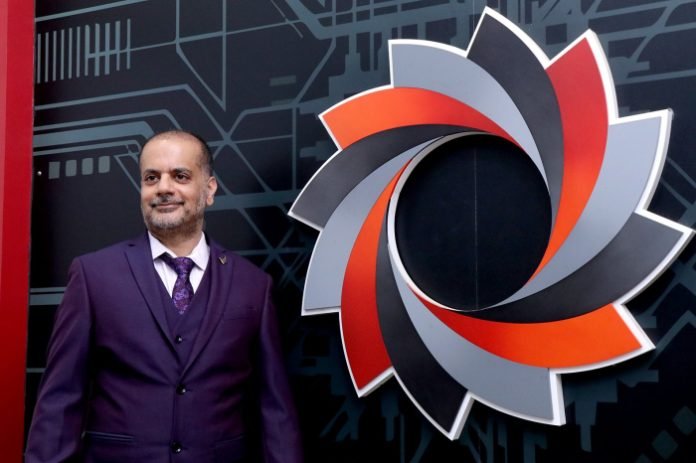“While compact machines have a smaller footprint and an understandably lower price tag attached to them, machines with stand-alone unwinds are clear winners when it comes to safety and visibility, access to key areas, and the possibility to accommodate in-line processes and bigger reel diameters.”
Footprint
Converting slitter-rewinders are available either in compact versions, where the unwind section is integrated with the rest of the machine, or with an unwind that stands alone and is connected to the main machine either by an overhead bridge or an underpass platform. While compact machines have a smaller footprint and an understandably lower price tag attached to them, machines with stand-alone unwinds are clear winners when it comes to safety and visibility, access to key areas, and the possibility to accommodate inline processes and bigger reel diameters.
Accessibility

Layouts differ widely in respect of the ease of access to key areas. A prominent example is the cutting section which needs to be accessed frequently, not only during initial setup but each time the blade or cutter needs to be replaced. The traditional (and most extensively used) compact slitter-rewinder has its unwind section positioned below the cutting section, requiring the operator to have to reach out above and across the unwind reel to access the cutters.
This challenge is overcome by either moving the unwind to the front end below the duplex rewind section in compact slitters or by separating the unwind section from the main machine, giving free access to the cutting section either below a bridge or atop an underpass platform. Improving cutter access was responsible to a large extent for the advent of slitter-rewinders with standalone unwind sections.
Hygiene considerations
As mentioned above, machines with stand-alone unwind sections have this section separated from the main machine employing either an overhead bridge or an underpass platform across which the substrate is transported, moving at high speeds along a set of path-determining rollers. As the substrate moves, its surface gets charged with some level of static electricity which, as we all know, is an open invitation for attracting dust in its close vicinity.
In machines with an overhead bridge, the substrate is kept several feet away from the floor as it moves from the unwind section to the main machine, keeping it out of bounds to the floor dust. This is unlike machines with an underpass platform where the substrate is susceptible to contamination by dust from the floor which is but a few inches away. Hygiene is non-negotiable when it comes to the food, pharma, and hygiene sectors, making the overhead option the obvious choice.
Staying on the subject of hygiene, machines that have discarded traditional hydraulic mechanisms in favor of electric power for motion control are preferred by the above sectors. Apart from providing a more hygienic environment, a machine devoid of hydraulics provides a safer operating environment where maintenance requirements, if any, are an exception rather than the rule as is the case with hydraulics. A typical example here would be the floor-lift mechanism for the unwind reel in which case the traditional hydraulic mechanism is fast giving way to an electro-mechanical construction, that apart from achieving its prime objective of eliminating hydraulics, is also more operator friendly owing to its linear trajectory in the vertical plane.












